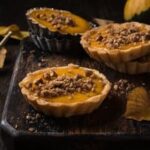When it comes to hand decorating cakes, the choice of icing can make all the difference in achieving a professional and visually appealing result. The right icing not only enhances the flavor of the cake but also plays a crucial role in the aesthetics of the final design.
So, what icing is best for hand decorating cakes? From buttercream to royal icing, fondant to ganache, each type of icing offers unique properties that can elevate your cake decorating skills to the next level.
Buttercream is a popular choice for hand decorating cakes due to its creamy texture and versatility in flavors. Royal icing, on the other hand, is known for its ability to create intricate designs with a smooth finish.
Fondant opens up endless possibilities for 3D decorations and cake covering while ganache provides a luscious and decadent finish. Each type of icing has its own set of pros and cons when it comes to texture, flavor, ease of use, and versatility in decoration techniques.
In this article, we will explore the characteristics of each type of icing commonly used for cake decorating as well as provide tips on how to make the perfect buttercream, work with royal icing for intricate designs, master fondant decorations, and achieve a smooth finish with ganache. By understanding the strengths and challenges of each type of icing, you’ll be able to choose the right one for your hand decorating needs and unleash your creativity in designing stunning cakes.
Types of Icings Commonly Used for Cake Decorating
Buttercream, royal icing, fondant, and ganache are the most commonly used icings when it comes to decorating cakes by hand. Each type of icing has its own unique properties that make it suitable for different cake decorating techniques. Understanding the characteristics of these icings can help you choose the right one for your specific cake decoration needs.
Buttercream
Buttercream is a classic choice for cake decorating due to its creamy texture and delicious flavor. It is easy to work with, making it ideal for creating smooth finishes and intricate designs on cakes. Buttercream can be easily tinted with food coloring to achieve various shades, perfect for adding colorful decorations to cakes.
Royal Icing
Royal icing is a popular choice for fine detailing on cakes, such as intricate piping work and delicate flowers. It dries hard, making it great for creating 3D decorations that stand out on cakes. Royal icing is versatile in terms of color options, as it can be customized with gel food coloring to achieve vibrant hues for decorations.
Fondant
Fondant is known for its smooth finish and ability to create elaborate 3D cake decorations. It can be rolled out to cover cakes seamlessly or molded into different shapes for unique designs. Fondant provides a clean canvas for hand decorating cakes, allowing decorators to showcase their creativity through sculpted figures, cutouts, and intricate details.
These different types of icings offer a range of textures, flavors, ease of use, and versatility when it comes to cake decorating. Experimenting with each type can help you discover which one works best for your specific design ideas and preferences. Whether you prefer the rich taste of buttercream, the delicate details of royal icing, the sculptural possibilities of fondant, or the smooth finish of ganache – choosing the right icing is key to bringing your cake decorating visions to life.
Pros and Cons of Each Type of Icing
Buttercream, royal icing, fondant, and ganache are all popular choices when it comes to icing for hand decorating cakes. Each type of icing has its own unique characteristics that can affect the overall look and taste of your cake decorations. It is essential to understand the pros and cons of each type to determine which one will work best for your specific design needs.
Buttercream is a classic choice for cake decorating due to its smooth texture and delicious flavor. It is easy to work with, making it perfect for creating intricate designs or simple swirls on top of cakes. However, buttercream can be sensitive to heat and humidity, so it may not be the best option for outdoor events or warm climates.
Royal icing, on the other hand, is great for detailed decorations that require a stiff consistency. It dries hard, making it ideal for creating 3D designs or intricate piping work. The versatility of royal icing allows for a wide range of color options, but it can have a strong taste that may not appeal to everyone. Additionally, royal icing can be challenging to work with for beginners due to its quick drying time.
Tips for Making the Perfect Buttercream Icing for Hand Decorating Cakes
Buttercream icing is a popular choice for hand decorating cakes due to its smooth texture and the ability to hold intricate designs. When it comes to making the perfect buttercream icing for your cake decorations, the right ingredients and mixing techniques are crucial.
Using high-quality butter, confectioners’ sugar, a splash of vanilla extract, and a pinch of salt can help achieve a rich and creamy buttercream base. It is essential to beat the butter until light and fluffy before gradually adding in the sugar to ensure a smooth consistency.
One key aspect of making buttercream icing for hand decorating cakes is getting the right consistency. The ideal buttercream should be stiff enough to hold its shape when piped onto a cake but also soft enough to spread easily. To achieve this perfect balance, it is important to slowly add in small amounts of milk or cream while beating the mixture until the desired consistency is reached. This helps in creating clean edges and precise decorations on your cakes.
Another tip for making the perfect buttercream icing for hand decorating cakes is paying attention to the temperature of your ingredients. Using room temperature butter and eggs can make all the difference in achieving a smooth and lump-free consistency. Additionally, experimenting with different flavor extracts or food coloring can add a personalized touch to your buttercream creations, making them not only visually appealing but delicious as well.
| Aspect | Tips |
|---|---|
| Ingredients | Use high-quality butter and confectioners’ sugar for a creamy base. |
| Mixing Techniques | Beat the mixture until light and fluffy; gradually add sugar for smooth consistency. |
| Consistency | Add small amounts of milk or cream gradually until desired texture is achieved. |
How to Work With Royal Icing for Intricate Hand Decorations
Royal icing is a popular choice for hand decorating cakes due to its smooth consistency and ability to hold intricate designs. When working with royal icing, it is essential to master piping techniques to achieve the desired decorations on your cake. Here are some tips for working with royal icing:
- Use a piping bag with a small round tip for fine details and lines
- Practice your piping skills on parchment paper before decorating the cake
- To create dimension, use different thicknesses of royal icing by adjusting the consistency with water or powdered sugar
Drying time is another crucial factor to consider when using royal icing for decorations. Unlike some other icings, royal icing hardens as it dries, making it ideal for intricate designs that need to hold their shape. Depending on the humidity in your environment, drying times can vary. Here are some tips for managing drying time when working with royal icing:
- Avoid touching or moving the decorated areas until the royal icing is completely dry
- Place the cake in a cool, dry place to speed up the drying process
- Use a fan or dehumidifier in humid conditions to help set the royal icing faster
Color options for royal icing are endless, thanks to food coloring gels and powders available in various shades. When using color in royal icing decorations, remember that colors may darken as they dry. To achieve vibrant colors in your designs, start with a slightly lighter shade than you desire. Additionally, mixing different colors of royal icing can result in unique shades and gradients for stunning hand-decorated cakes.
Overall, mastering royal icing for hand decorating cakes requires practice and patience. With attention to detail in piping techniques, managing drying time effectively, and exploring color options creatively, you can elevate your cake decorations to the next level. Remember that experimentation and innovation are key when working with royal icing – don’t be afraid to try new techniques and push the boundaries of your creativity.
Using Fondant for 3D Cake Decorations
Fondant is a versatile type of icing that can be used to create intricate 3D decorations on cakes. Its smooth and pliable texture makes it perfect for shaping into various figures, flowers, and other decorative elements. When working with fondant for hand decorating cakes, it’s essential to master the rolling techniques to ensure a smooth and even surface.
Rolling Techniques
To begin, dust your work surface with powdered sugar to prevent sticking. Knead the fondant until it is soft and pliable, then use a rolling pin to roll it out into a thin sheet. Roll from the center outwards in all directions to maintain an even thickness. If the fondant starts to stick, gently lift and reposition it while continuing to roll.
Shaping
Once you have rolled out your fondant, you can start shaping it into various designs. Use cookie cutters or specialized tools to cut out shapes like flowers, leaves, or geometric patterns. To create 3D decorations, use molds or your hands to sculpt the fondant into desired shapes. Be gentle when shaping the fondant to avoid any cracks or tears.
Covering Cakes With Fondant
Covering a cake with fondant can give it a seamless and professional finish. Start by crumb-coating your cake with buttercream icing to create a smooth base for the fondant. Roll out a large sheet of fondant and carefully drape it over the cake, smoothing it down gently with your hands.
Trim any excess fondant from the base of the cake using a pizza cutter or knife for a clean edge. Fondants typically work best on covers for individual cakes that would be hand-decorated promptly after being covered because they dry crusty if left uncovered after working them which makes them lose their elasticity needed for detailed artwork.
Mastering these techniques will open up endless possibilities for creating beautiful 3D decorations on cakes using fondants. Remember that practice makes perfect when working with this type of icing, so don’t be afraid to experiment and unleash your creativity in hand-decorating cakes using fondant.
Mastering Ganache for a Smooth Finish on Hand-Decorated Cakes
Ganache is a popular choice for many bakers when it comes to decorating cakes due to its smooth and glossy finish. Mastering the art of making ganache can take your cake decorations to the next level.
The key to achieving the perfect ganache lies in getting the ratio of chocolate to cream just right. Typically, for a dark chocolate ganache, a 2:1 ratio of chocolate to cream is used, while for a milk or white chocolate ganache, a 3:1 ratio is more common.
When making ganache, it’s important to pay attention to the temperature of both the chocolate and the cream. Heating the cream until it’s just about to boil and then pouring it over finely chopped chocolate allows for a smooth emulsion.
Stirring gently and patiently until all the chocolate has melted into the cream will ensure a silky consistency. Once your ganache is ready, you have the option of either pouring it over your cake for a glossy finish or spreading it with an offset spatula for a slightly thicker coating.
One advantage of using ganache is its versatility in terms of texture and ease of use. It can be used as a glaze, frosting, filling, or even whipped into a lighter mousse-like consistency depending on your preference.
Ganache also sets beautifully, providing a sleek canvas for hand decorating with other icings like buttercream or royal icing. Experimenting with different techniques such as piping or marbling with ganache can help you create stunning designs on your cakes that are sure to impress your guests.
| Ganache | Benefits |
|---|---|
| Smooth Finish | Versatile Texture |
| Easy to Use | Great for Layering |
Combining Different Types of Icings for Stunning Cake Designs
When it comes to creating visually stunning cake designs, one of the most effective techniques is to combine different types of icings. By layering, mixing textures, and creating contrast with various frostings, you can elevate your cake decorating skills to new heights. Understanding how to effectively blend different icings will not only enhance the overall appearance of your cakes but also add depth and interest to your creations.
One popular way to combine different types of icings is by layering them on top of each other. For example, you can start with a base layer of buttercream icing for a smooth finish and then add intricate royal icing designs on top.
This layering technique allows you to create depth in your decorations and make certain elements stand out more prominently. Experimenting with different colors and textures in each layer can result in a visually dynamic cake that is sure to impress.
Another strategy for combining different types of icings is to mix textures within the same design. For instance, you can use smooth ganache for the base of your cake and then pipe delicate royal icing flowers on top.
The contrast between the glossy ganache and the intricate detailing of the royal icing creates a visually appealing juxtaposition that adds visual interest to your cake. Mixing textures in this way adds dimension to your designs and keeps them from looking flat or one-dimensional.
By creating contrast in your cake designs using a combination of different icings, you can achieve truly stunning results that will wow your guests. For example, pairing the rich chocolate flavor of ganache with the light sweetness of fondant accents can create a harmonious balance that tantalizes both the eyes and taste buds.
Experiment with different combinations of icings, colors, and techniques to discover what works best for your own unique style and preferences when hand decorating cakes as they all play an important role in determining what icing is best beat for hand decorating cakes.
Conclusion
In conclusion, selecting the appropriate icing for hand decorating cakes is a crucial step in achieving stunning and delicious creations. Each type of icing – whether it be buttercream, royal icing, fondant, or ganache – has its own set of pros and cons in terms of texture, flavor, ease of use, and versatility. Understanding these differences can help you choose the best icing for your desired outcome.
For those looking to make buttercream icing from scratch for their cake decorating endeavors, paying attention to ingredients, mixing techniques, and consistency is key. Achieving the perfect balance will ensure that your hand-decorated cakes not only look beautiful but taste delightful as well.
As you embark on your cake decorating journey, don’t be afraid to experiment with different types of icings and techniques. Mixing and matching various textures and flavors can result in truly unique and eye-catching designs. So whether you opt for the smooth finish of ganache or the intricate details of royal icing piping, remember to have fun and let your creativity shine through what icing is beat for hand-decorating cakes.

Welcome to my blog about home and family. This blog is a place where I will share my thoughts, ideas, and experiences related to these important topics. I am a stay-at-home mom with two young children. I hope you enjoy reading it! and may find some helpful tips and ideas that will make your home and family life even better!





